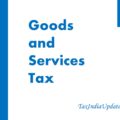On the theme of ‘Make-In-India’, the Government of India on 01st April, 2015 issued a new Indian Foreign Trade Policy 2015-2020 for the period 01-04-2015 to 31-03-2020. New policy have aims at boosting India’s manufacturing, exports sectors. The relevant documents are below which is issued by the Ministry of Commerce and Industry, Department of Commerce, Government of India:
| FOREIGN TRADE POLICY | Download in English | Download in Hindi |
| FTP- HANDBOOK OF PROCEDURES | Download in English | Download in Hindi |
| HIGHLIGHTS OF FOREIGN TRADE POLICY-2015 | ||
| FTP STATEMENT-2015 | ||
HIGHLIGHTS OF THE FOREIGN TRADE POLICY 2015-2020
1. The New Foreign Trade Policy introduces two new schemes, first “Merchandise Exports from India Scheme (MEIS)” for export of specified goods to specified markets and another is “Services Exports from India Scheme (SEIS)” for increasing exports of notified services, in place of a plethora of schemes earlier, with different conditions for eligibility and usage. There would be no conditionality attached to any scrips issued under these schemes. Duty credit scrips issued under MEIS and SEIS and the goods imported against these scrips are fully transferable. For grant of rewards under MEIS, the countries have been categorized into 3 Groups, whereas the rates of rewards under MEIS range from 2% to 5%. Under SEIS the selected Services would be rewarded at the rates of 3% and 5%.
2. Measures have been adopted to nudge procurement of capital goods from indigenous manufacturers under the EPCG scheme by reducing specific export obligation to 75% of the normal export obligation. This will promote the domestic capital goods manufacturing industry. Such flexibilities will help exporters to develop their productive capacities for both local and global consumption. Measures have been taken to give a boost to exports of defense and hi-tech items. At the same time e-Commerce exports of handloom products, books/periodicals, leather footwear, toys and customized fashion garments through courier or foreign post office would also be able to get benefit of MEIS (for values upto 25,000 INR). These measures would not only capitalize on India’s strength in these areas and increase exports but also provide employment.
3. Commerce Minister stated that although exports from SEZs had seen phenomenal growth, significantly higher than the overall export growth of the country, in recent times they had been facing several challenges. In order to give a boost to exports from SEZs, government has now decided to extend benefits of both the reward schemes (MEIS and SEIS) to units located in SEZs. It is hoped that this measure will give a new impetus to development and growth of SEZs in the country.
4. Trade facilitation and enhancing the ease of doing business are the other major focus areas in this new FTP. One of the major objective of new FTP is to move towards paperless working in 24×7 environment. Recently, the government has reduced the number of mandatory documents required for exports and imports to three, which is comparable with international benchmarks. Now, a facility has been created to upload documents in exporter/importer profile and the exporters will not be required to submit documents repeatedly. Attention has also been paid to simplify various ‘Aayat Niryat’ Forms, bringing in clarity in different provisions, removing ambiguities and enhancing electronic governance.
5. Manufacturers, who are also status holders, will now be enabled to self certify their manufactured goods in phases, as originating from India with a view to qualifying for preferential treatment under various forms of bilateral and regional trade agreements. This “Approved Exporter System” will help these manufacturer exporters considerably in getting fast access to international markets.
6. A number of steps have been taken for encouraging manufacturing and exports under 100% EOU/EHTP/STPI/BTP Schemes. The steps include a fast track clearance facility for these units, permitting them to share infrastructure facilities, permitting inter unit transfer of goods and services, permitting them to set up warehouses near the port of export and to use duty free equipment for training purposes.
7. Considering the strategic significance of small and medium scale enterprise in the manufacturing sector and in employment generation, ‘MSME clusters’ 108 have been identified for focused interventions to boost exports. Accordingly, ‘Niryat Bandhu Scheme’ has been galvanized and repositioned to achieve the objectives of ‘Skill India’. Outreach activities will be organized in a structured way at these clusters with the help of EPCs and other willing “Industry Partners” and “Knowledge Partners”.




